Garlic is popular for its flavor, smell, and other health benefits. But only planting garlic in your garden can be boring. Pairing it with other plants can be beneficial. But there are also some which were not good companions for garlic.
Common companion plants for garlic are tomatoes, dill, cabbage, chamomile, spinach, marigolds, Kale, broccoli, roses, and certain fruit trees. However, some plants you cannot plant with garlic are asparagus, parsley, sage, beans, and other alliums.
There are many other plants that you can pair with garlic. In this article, we shared a list of plants you can plant with garlic and a list that includes the worst companions for garlic. So, without further delay, let’s begin with it.
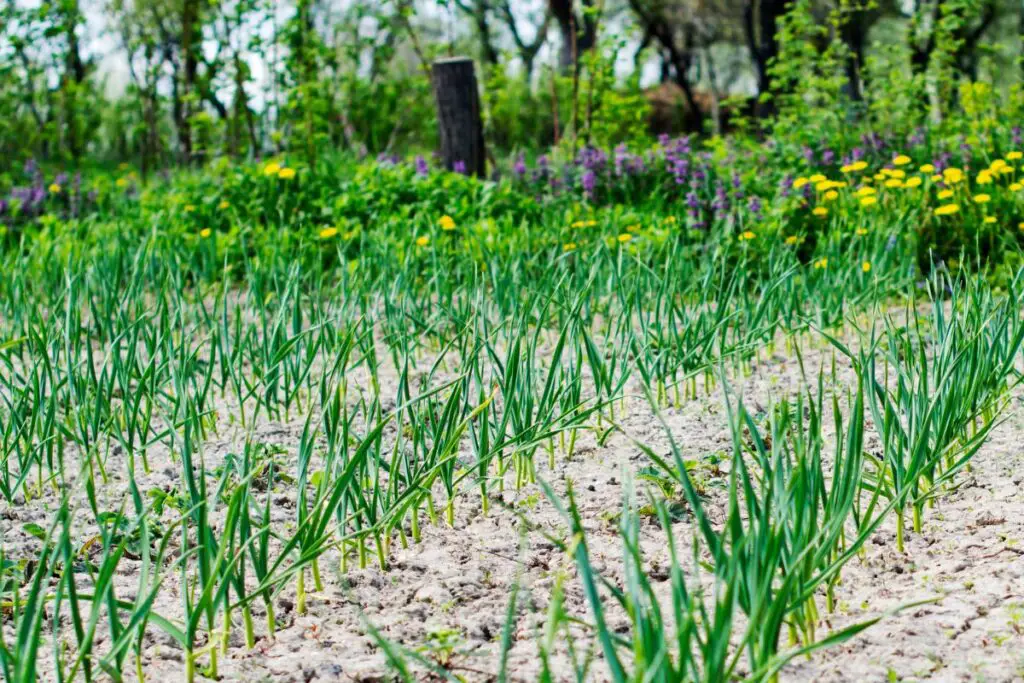
Benefits of companion planting with garlic
Planting companions with garlic has a lot of advantages:
Improves soil quality
All plants absorb nutrients from the soil.
But different plants require different nutrients and absorb them at different depths.
Due to these distinctions, the plants won’t have to fight for nutrients.
The soil doesn’t get depleted or run out of nutrients.
For example, plants like nitrogen-fixing legumes can make the soil richer than it is, thus making the soil healthier.
On the other hand, garlic bulbs release sulfur, decreasing fungal infections in other plants.
In this way, both garlic and its companions can be useful to each other.
Attracts beneficial insects and pollinators
If your garden is attacked by bugs like aphids, planting some flowering plants with garlic can attract insects that will feed on these bugs.
For example, ladybugs can feed on aphids.
So, you can plant some plants liked by ladybugs to attract them.
This process is great because you don’t have to apply insecticides separately.
Insecticides sometimes can be harmful, and it even kills valuable insects.
Provide shade and support
Some climbing plants like nasturtiums will be a good companion.
Since nasturtiums can climb, garlic stalks can give them support.
Their leaves can also mulch the soil around the garlic bulbs.
Encourages growth
Some plants release beneficial chemicals in the ground, which is further helpful for garlic.
Besides this, since garlic takes a small place to grow, you can cultivate some other plants.
Controls pest infestation
Many pests attack some specific plants and reach them if they smell them near.
But the bugs can be confused if there are other unfamiliar scented plants.
Garlic has a strong smell, and it can deter lots of pests.
But for deterring garlic pests, you can plant other strong-scented plants like Dill.
You can also make a homemade insecticidal spray by soaking the garlic cloves in water.
Creates a live mulch
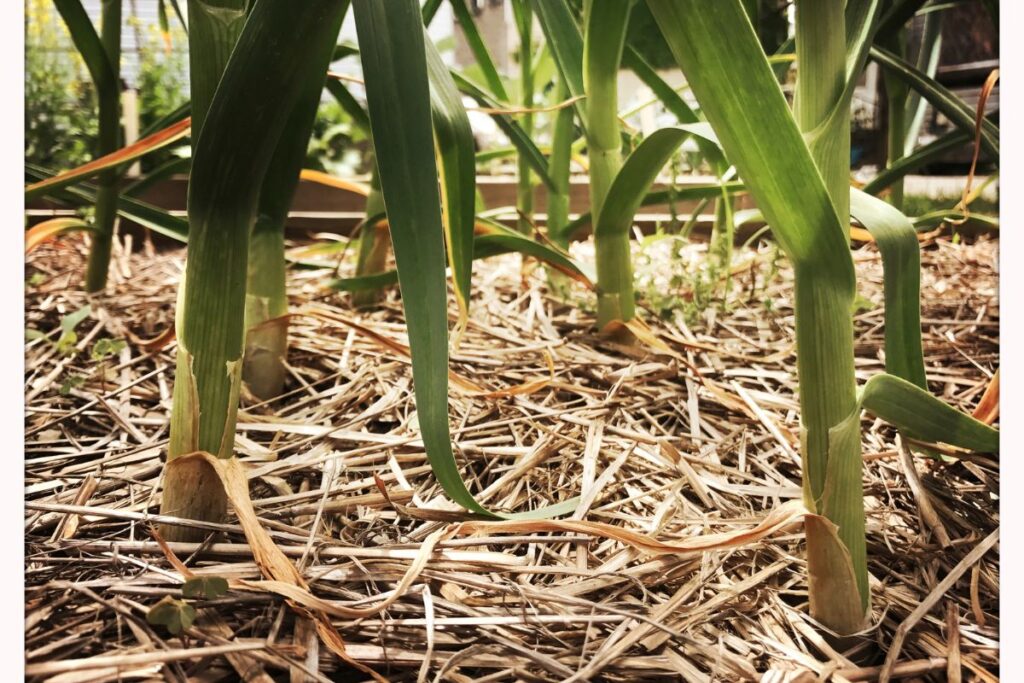
Growing low-growing plants with spreading habits across the soil can create a living mulch for garlic.
You don’t need to apply mulch separately.
Weeds are harmful to garlic bulbs, and it also attracts bugs.
So, growing some low-growing plants with such spreading habits can mulch the garlic bed and suppress weed growth.
Creating markers
Growing slow-growers with fast-growers helps you know where the seeds are planted.
It works as a marker in your garden bed.
For example, if you grow garlic with carrots, the scapes help mark the garlic borders.
What can I plant with garlic?
There are lots of plants to grow with garlic, including fruits, vegetables, and flowering plants.
Let’s have a look at the companion plants.
Fruit trees
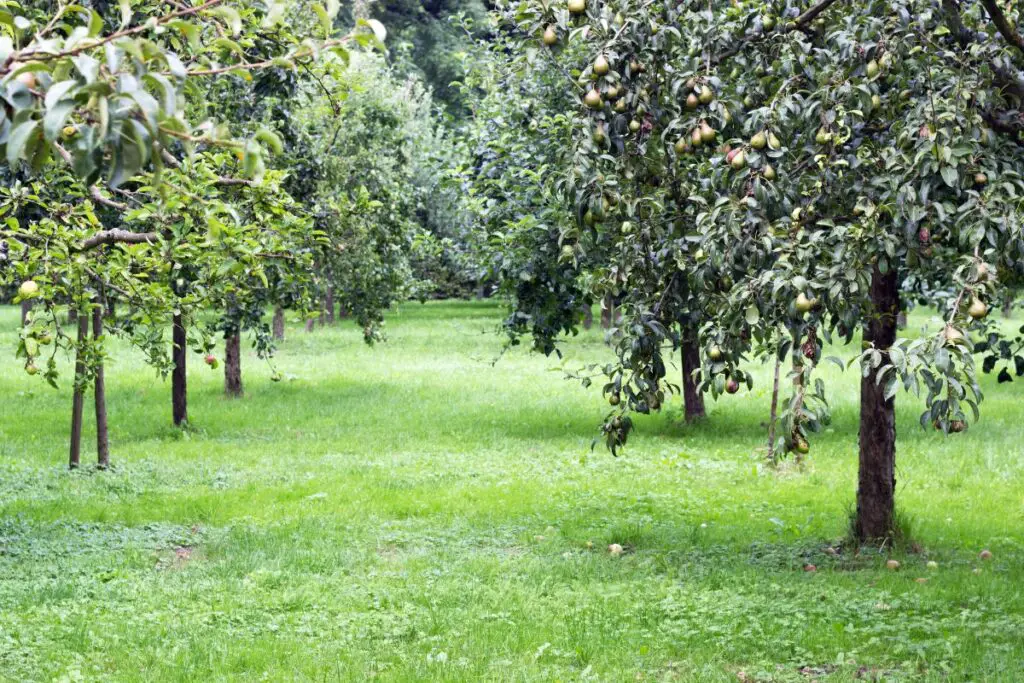
You can grow all the fruit trees with garlic.
Since garlic releases sulfur in the soil, the fruit trees will absorb the sulfur, thus controlling fungal diseases in the trees.
Garlic prevents apple scab and leaf curl and repels insects like beetles and aphids.
Looking for gardening supplies? We have tested 100's of products before recommending them to you guys. Check out our best pick below:
| Image | Gardening Supplies | Best Price? |
|---|---|---|
 Top
Top Top
Top | Raised Garden Bed Kit | Check On Amazon |
 | XLUX Soil Moisture Meter, Plant Water Monitor, Soil Hygrometer Sensor for Gardening, Farming, Indoor and Outdoor Plants, No Batteries Required | No Results |
 Top
Top Top
Top | 82 Pcs Garden Tools Set and Extra Succulent Tools Set | Check On Amazon |
 | Joeys Garden Expandable Garden Hose with 8 Function Hose Nozzle, Lightweight Anti-Kink Flexible Garden Hoses, Extra Strength Fabric with Double Latex Core, (50 FT, Black) | No Results |
 Top
Top Top
Top | Dual Chamber Compost Tumbler | Check On Amazon |
 Top
Top Top
Top | Sunnyglade Plant Stakes | Check On Amazon |
 Top
Top Top
Top | Organic Cold Pressed Neem Seed Oil | Check On Amazon |
 Top
Top Top
Top | Mighty Mint Gallon :-Insect and Pest Control Peppermint Oil | Check On Amazon |
 Top
Top Top
Top | Scotts DiseaseEx Lawn Fungicide | Check On Amazon |
 Top
Top Top
Top | Jacks Classic 20-20-20 All Purpose Fertilizer | Check On Amazon |
 Top
Top Top
Top | 30,000 Seeds Pollinator Attracting Wildflower Mixture | Check On Amazon |
 Top
Top Top
Top | Survival Vegetable Seeds Garden Kit-Over 16,000 Seeds | Check On Amazon |
Beet
Beetroot is a good companion for garlic.
Garlic sucks the nutrients from different soil and beet from another soil level.
So planting them together won’t be a problem, and they will not fight for nutrients with each other.
Garlic can improve the beetroot flavor and prevent fungal infections and bugs like gophers and moles.
Cabbage
Cabbage is also a good companion.
Garlic helps deter many pests that attack the cabbages, like beetles, cabbage loopers, worms, moths, and aphids.
Besides, both of them can become mature in the hot summer months.
So, you can get them together.
Besides, both cabbage and garlic have nearly the same requirements.
So, you don’t have to put extra effort into the cabbage.
Spinach
Spinach will be a great addition besides garlic.
Spinach is a low-growing green with spreading habits.
These can help control weed growth near your garlic plants.
It can also work as a good mulch.
You don’t have to add extra mulch to cover your garlic, provided your region receives an average winter cold.
Spinach has more turnaround and quick backtracking than garlic.
Tomatoes
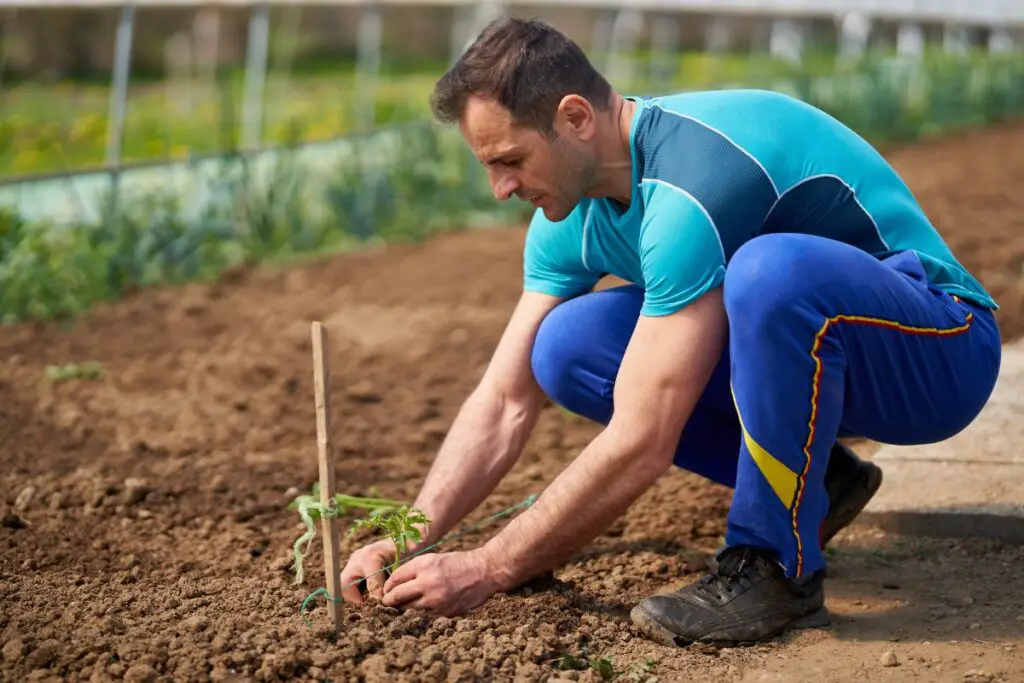
Planting garlic with tomatoes is quite beneficial for the latter.
The odor of the garlic bulb can deter pests like spider mites and aphids away from the tomato plants.
Plant the garlic cloves in rows during the fall. Harvest some young garlic and fill the space with tomatoes.
It will protect the young tomatoes from pests.
Kale
You can plant this cool-weather plant with garlic together at the same time.
Like garlic, Kale takes very little space, thus leaving behind some more space for other crops.
Pests like aphids and mites can attack Kale.
But, planting garlic will repel these bugs.
Potatoes
Planting garlic and potatoes together can help prevent potato blight and deter the disease much more than a fungicide.
As I have mentioned earlier, garlic releases sulfur into the soil.
When the potato roots absorb nutrients from the soil, they also absorb sulfur, which helps greatly in repelling fungal diseases from the plant.
Both of them have nearly the same requirements.
So, you don’t have to give extra effort.
You can take care of them together in the same way.
A difference is in the soil pH.
Potatoes enjoy a little more acidic soil than garlic.
Eggplant
Eggplant is a nightshade family member and will be a great pair with garlic plants.
Garlic helps in increasing the yield of the eggplants.
So, you can have a large eggplant harvest.
While harvesting, harvest the garlic bulbs before eggplants get to grow bigger.
Otherwise, the latter will end up shading the garlic plants.
Cauliflower
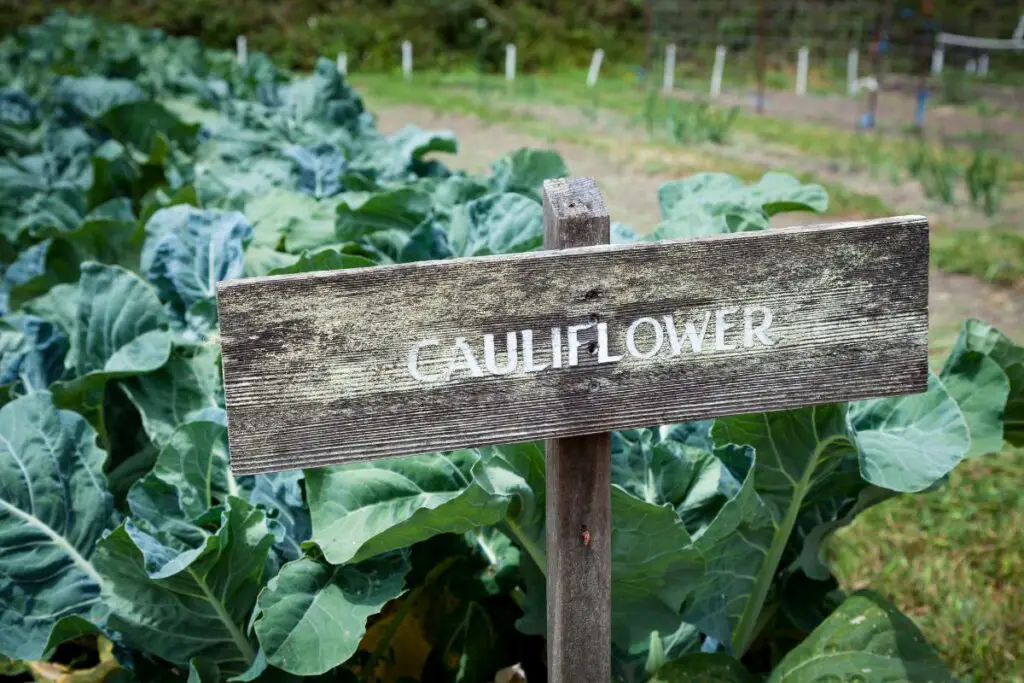
Just like the cabbage, cauliflower will also benefit as a garlic companion.
Garlic planted beside cauliflower will keep the bugs away from the latter.
Aphids will love to feast over the cauliflowers, but they hate the garlic smell.
Even the cabbage worms and adult moths can attack cauliflowers.
Garlic can stop these infestations.
Broccoli and Kohlrabi
Another vegetable that benefits from garlic is broccoli.
Your broccoli will stay safe without pests like beetles and cabbage worms if planted with garlic.
Even kohlrabi will benefit from garlic.
Cucumber
Cucumbers will increase if planted with garlic because garlic can boost the nutrient level.
Research has said that when you plant cucumber and garlic, the level of many nutrients increases, like nitrogen, phosphorus, potassium, calcium, and manganese.
When these nutrients increased, the number of cucumber production also increased.
Roses
You can plant Roses with garlic because garlic repels many bugs that might attack roses, like aphids, ants, mites, and snails.
Garlic also reduces the chances of growing black spots in rose plants.
Plant some cloves around the rose plant in a circle, and you can see the difference.
Summer savory
It is a herb plant, and most of the time, the plant gets a lot of help from garlic.
But, Summer Savory also helps in garlic growth.
It improves the health and development of garlic bulbs.
It also attracts insects for pollination, which further feeds on other bugs like aphids.
Dill
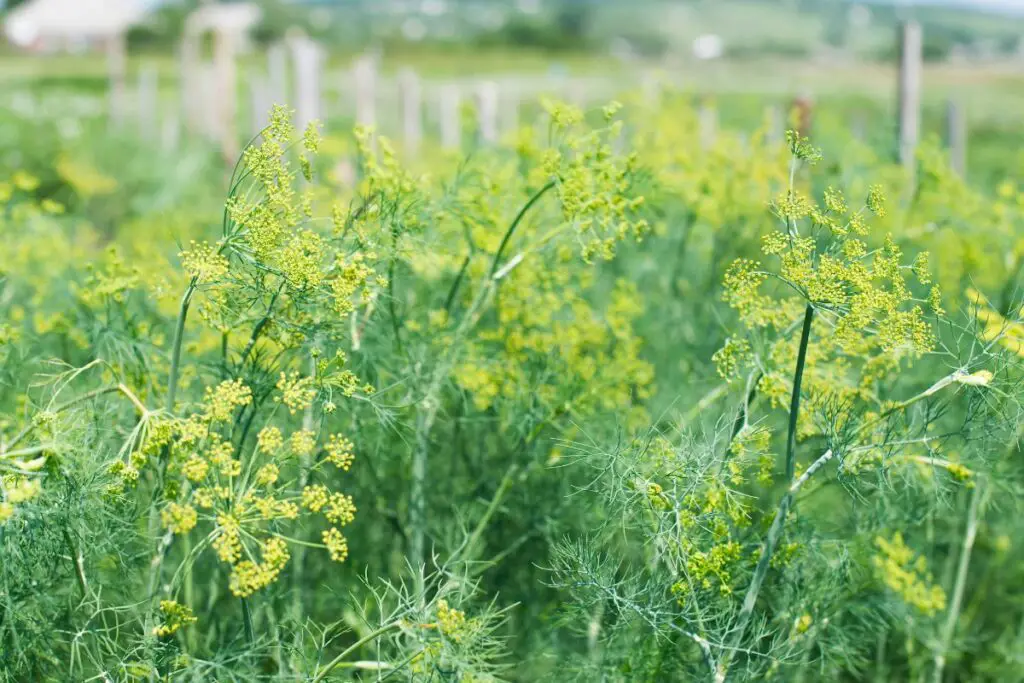
Garlic can deter pests that attack the dill plant.
Besides, Dill will also help garlic because Dill can increase the flavor.
Dill also helps deter garlic bugs like thrips, moths, and worms.
Dill plants have a tender root system.
So, it would be best to plant them between the garlic rows, so they don’t get disturbed by the garlic harvest.
Chamomile
Chamomile can also enhance the garlic flavor and strengthen it if planted as a companion.
Besides, Chamomile can also cover up the garlic smell, which is good if you don’t enjoy garlic’s pungent smell.
The requirements for garlic and Chamomile are the same.
But, you must plant Chamomile after the risk of frost has passed.
Tarragon
Most plants benefit from garlic as a companion.
But planting garlic with Tarragon changes the position of the garlic.
Tarragon is a perennial herb that assists garlic and helps it in improving the growth of cloves and thus increasing their yield.
You will get a larger garlic harvest if planted with Tarragon.
Peppers
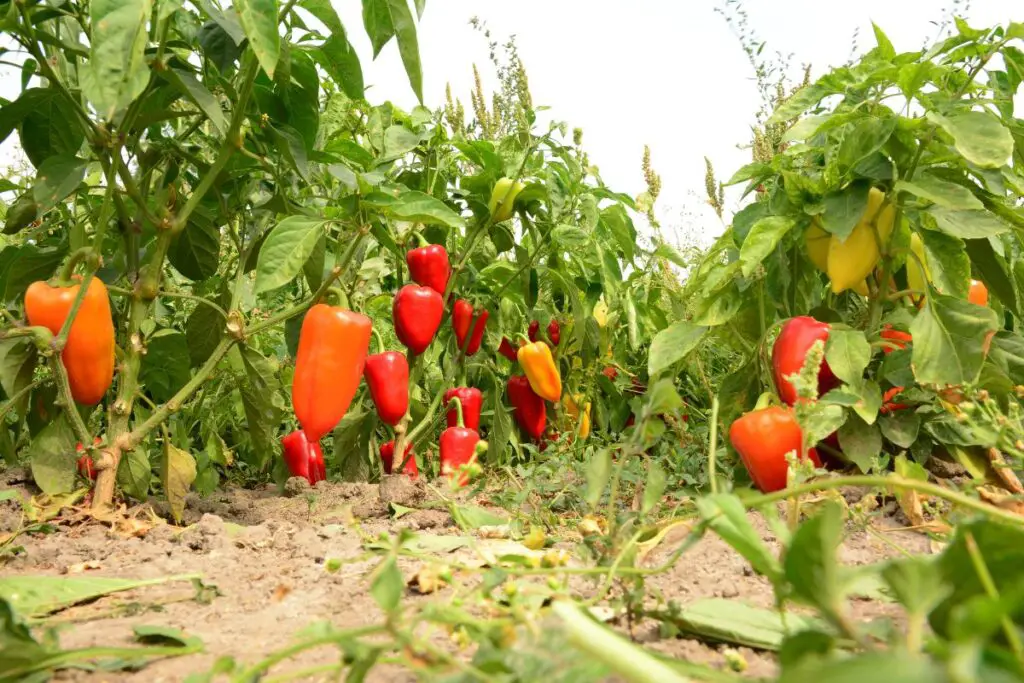
These plants will highly benefit if planted with garlic.
As we know by now, garlic’s sulfur release feature and pungent smell can greatly keep diseases and bugs away.
So, garlic will benefit peppers the same way.
It will keep fungi and bugs away from these sun-loving plants.
Peppers, too, are known to deter a lot of pests.
Plant peppers beside the garlic plants in the late spring or early summer.
Soon, your pepper plant will thrive without white mold and phytophthora.
Peppers and garlic in homemade dishes can make the dishes tastier and spicy.
Rue
Rue is a herb plant that assists garlic in many ways.
Rue also can improve the garlic flavor like Chamomile and Dill.
Besides, it also helps deter onion maggots which are a common garlic bug, and its infestation can degrade the garlic bulbs to a great extent.
The smell of Rue is not enjoyed by the onion flies too.
These flies will stay away from your garlic plants if planted with Rue.
Nasturtiums
Nasturtiums are climbing plants with spreading habits.
They will even climb up over the garlic stalks for support.
Due to their spreading habits, Nasturtiums can help the garlic bed mulch and suppress weed growth, like spinach.
Some pests will lay eggs under the leaves of Nasturtiums.
You can remove and burn them, thus interfering with the life cycle of the garlic pests.
Besides, Nasturtiums themselves also repel lots of pests.
So, when you plant garlic and Nasturtiums, pests will find it hard to reach any of them.
Marigolds
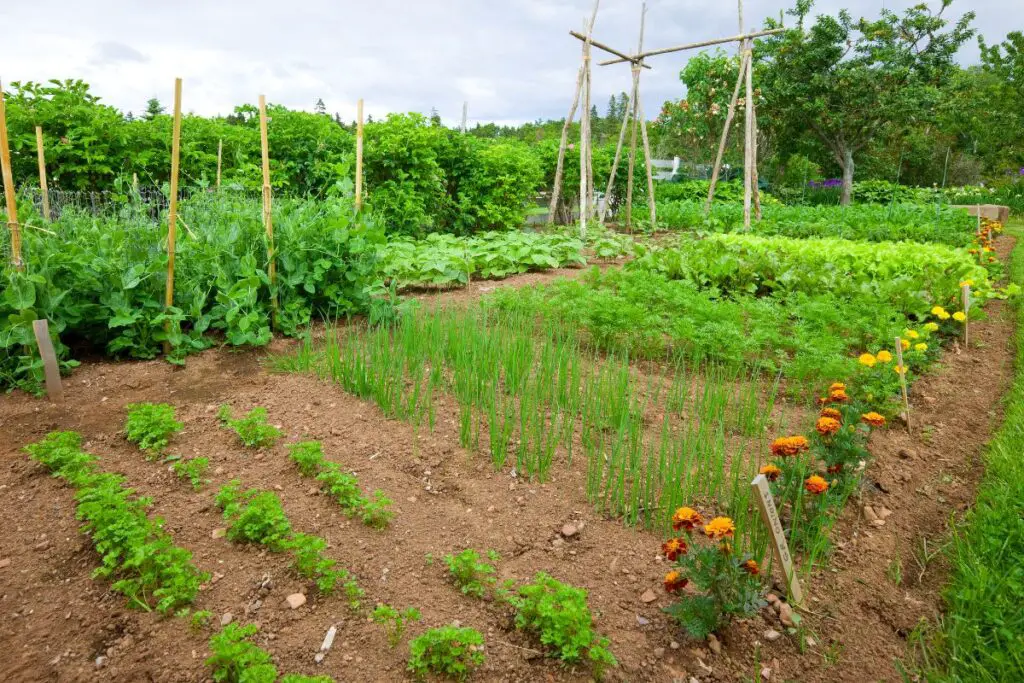
Both garlic and Marigolds are known to deter bugs and insects.
Both of them have a strong smell, for which pests won’t be loitering much around them.
Besides, the garlic smell can also deter other animals like deer and rabbits and stop them from feeding on the Marigold flowers.
Yarrow
Planting Yarrow with garlic is beneficial for garlic plants.
Yarrow is known to improve the health and production of garlic bulbs.
Geraniums
Geraniums can attract beneficial bugs like ladybugs which can feed on the aphids and make your garlic aphid-free.
On the other hand, garlic can keep pests away due to its pungent smell.
Together both will be useful to each other, especially in repelling bugs from the garden bed.
Garlic will also keep snakes away from your geraniums.
What should I not plant with garlic?
There are a lot of plants to plant with garlic.
Some benefit from garlic, and some assist in garlic’s growth and development.
But, it would be best not to plant a few plants with garlic.
Here are some plants that should not be close to garlic:
Beans
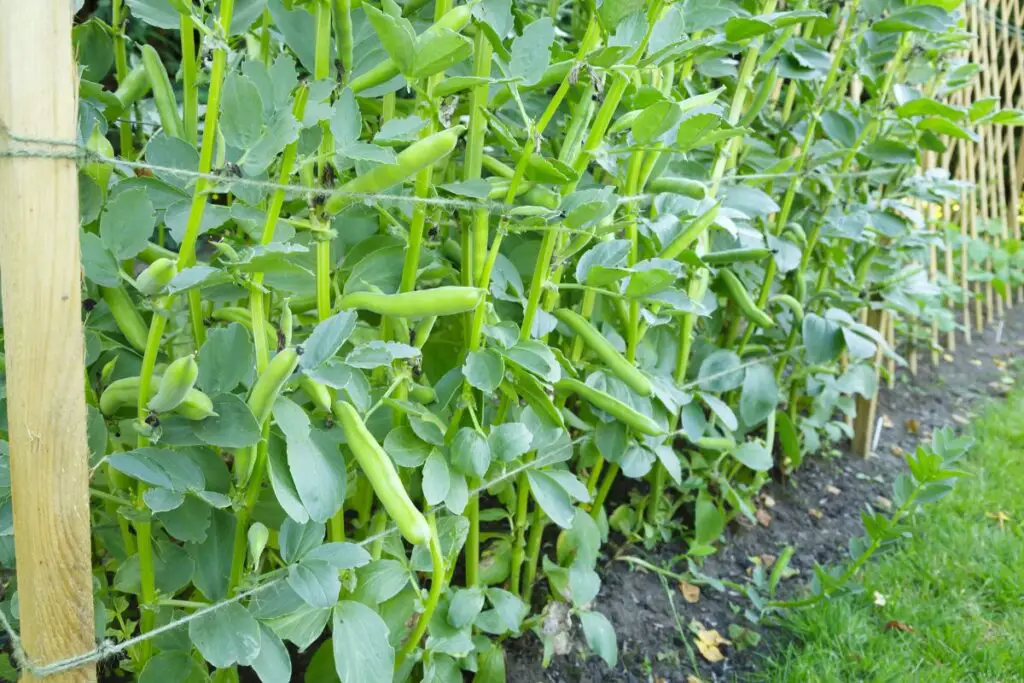
Garlic will slow down its growth and result in stunted growth if they sit next to most bean plants, including bush beans, broad beans, climbing beans, and other legumes.
Both will compete for the resources they need, and both can stunt their growth.
However, you can plant the garlic in the plant where you have finished growing beans.
Since legumes can make the soil rich in nitrogen, garlic will benefit from it.
Sage
This plant will also stunt garlic bulbs’ growth.
Besides, Sage might get disturbed during planting and harvesting garlic, and Sage won’t like this interference.
Asparagus
Both garlic and Asparagus will be harmful to each other.
Both will stunt each other’s growth and fight for the same resources.
Besides, Asparagus can corrupt the flavor and taste of recently developed young bulbs.
Asparagus has a sensitive and shallow root system that won’t enjoy disturbance due to frequent garlic planting and harvesting.
Strawberries
Whether strawberry is a good or bad companion for garlic is a matter of debate.
Though garlic can deter pests like spider mites from strawberries, it can also stunt the plant’s growth.
Garlic will reduce the plant’s strawberry growth which is more damaging and frustrating than pest damage.
Carrots
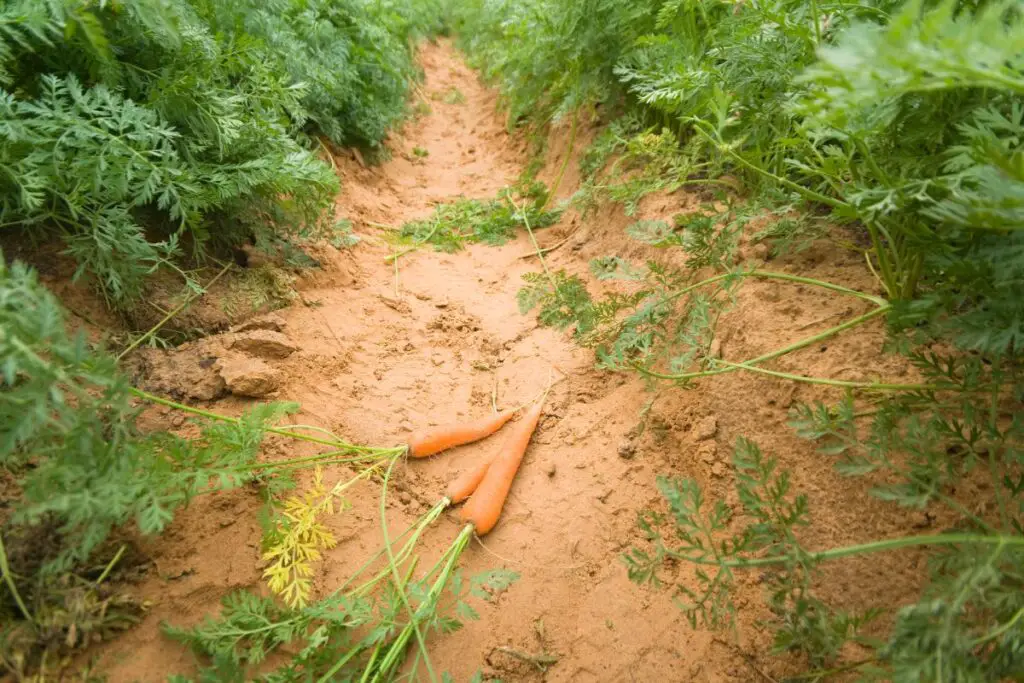
Planting carrot with garlic is also another subject of debate.
Garlic helps deter pests like carrot flies from the carrot plant, which is why most people grow them together.
Carrots also can deter the insects that attack the garlic plants.
But despite being useful to each other, you should not plant them together.
When garlic gets ready for harvest, you should not water garlic 1-2 weeks before the harvesting time.
On the contrary, carrots need to be watered and kept hydrated.
That is why you can’t plant them in the same bed.
But, you can plant carrots away from the garlic plants where their watering needs won’t interfere with their growth system.
Parsley
Again, garlic and parsley will fight for food resources and nutrients in the soil. They take it from the same level.
As a result, both will get exhausted in the fight and end up stunting each other’s growth.
Peas
Pea is another vegetable that can stunt garlic plants by competing for soil resources.
Peas will deteriorate the growth and health of garlic bulbs and reduce their yield.
Other alliums
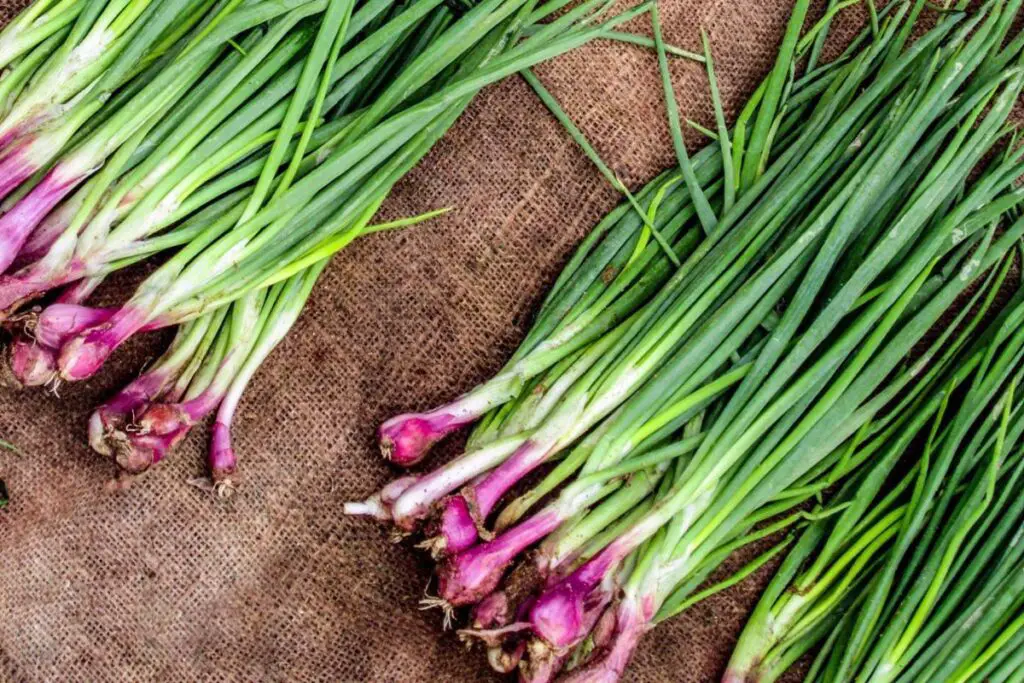
It will help if you do not plant garlic with or close to other alliums.
So many alliums together will encourage the bugs that attack allium members, like onion flies and maggots.
It will give them a path to make a feast underground.
It would be best to plant allium members away from each other to prevent maggots.
Final thoughts
Planting other plants with garlic can also be effective, interesting, and good-looking. Only garlic can be boring. Planting multiple plants together can improve your gardening skill and make it more interesting.
There are so many plants to grow with garlic – fruit plants, vegetables, flowering plants, and even some herbs. Before you plant companions, you must know the worst companions like peas, parsley, sage, Asparagus, beans, etc.
Most of the good companions have similar requirements as garlic. So, you don’t have to put extra effort into them.
Reference: The Pennsylvania State University, Garlic Production for the Gardener, University of Massachusetts Amherst, Ohio State University Extension.
